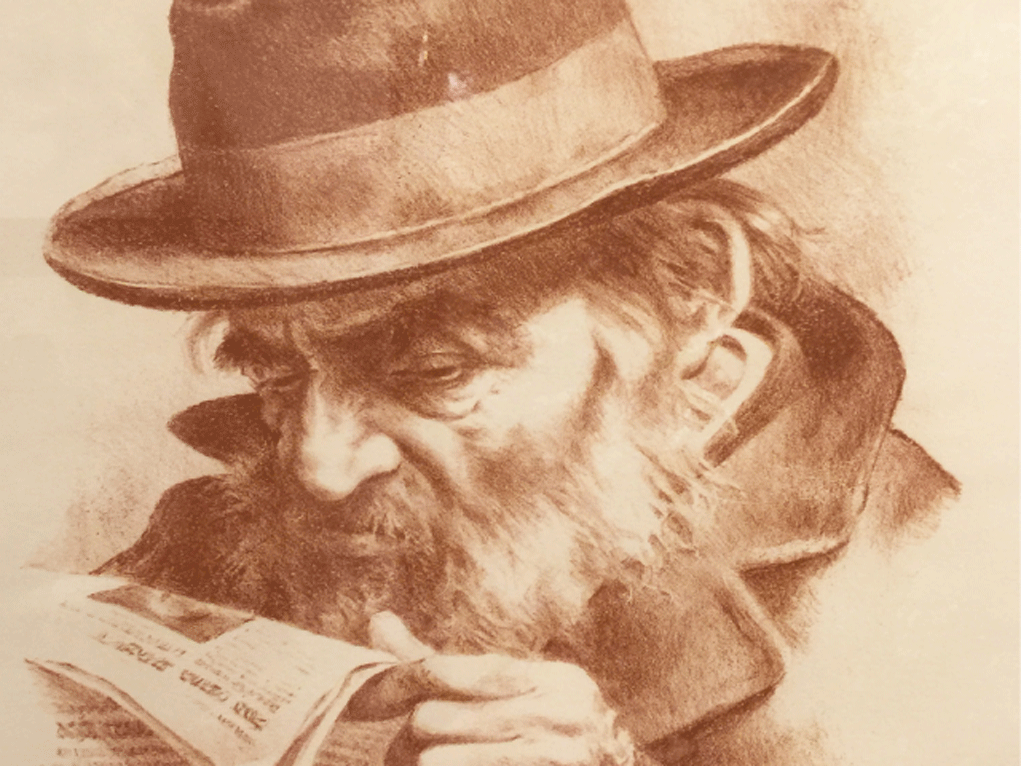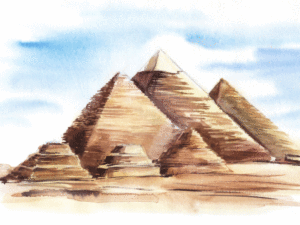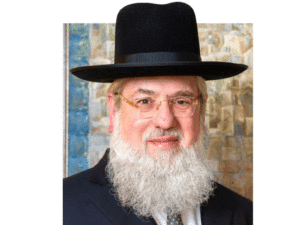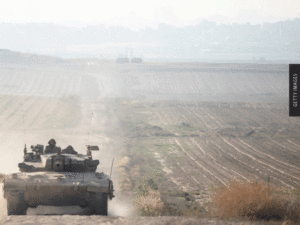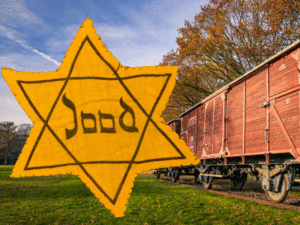Huge Crowds at the Kosel on Shavuos
This year, the Kosel drew 100,000 visitors during Shavuos. Try to imagine how much planning and preparation goes into making sure that 100,000 people are able to come to the Kosel, to learn and daven in peace, and to return home without incident. Boruch Hashem, we can report that the many visitors to the Kosel indeed came and went in peace.
The preparations for the Yom Tov were not limited to the realm of security, even though there are always enemies looking for opportunities to harm the Jews of Yerushalayim. Aside from that, it was also necessary to prepare the site appropriately to accommodate the enormous volume of the crowds. And that is aside from the massive quantities of food and drink that were brought to the area by various people. Just imagine the vast number of Kiddushim held in the area of the Kosel on the morning of Shavuos….
We must also not allow ourselves to forget the experiences of the previous years, when the coronavirus pandemic led the authorities to sharply limit the number of people permitted at the Kosel on Yom Tov. Fortunately, Hashem has put an end to that dreadful plague, and we must give thanks and praise to Him for that. This year, the crowd in the Kosel plaza on Shavuos night and in the morning extended to the entrance from the road. Perhaps this was a taste of the future; as Chazal tell us, Eretz Yisroel is destined to expand in the era of Moshiach in order to accommodate the entirety of the Jewish people.
For more specific numbers, I went directly to the best possible sources: Rav Shmuel Rabinovich, the rov of the Kosel, and the Western Wall Heritage Foundation. According to their report, the Yom Tov of Shavuos and the Shabbos that immediately followed it ended on an uplifting note, as official records showed that other 100,000 people had visited the Kosel plaza over the course of the two days. The occupancy was at its highest for vosikin on the morning of Yom Tov. The custom of visiting the Kosel on Shavuos has been practiced for the past 56 years, ever since the Kosel was liberated and the Jewish people were permitted to return to it after years of separation. The shuls in the area surrounding the Kosel were also filled as usual with many more mispallelim, who came to spend the night learning and reciting Tikkun Leil Shavuos. Generous donors arranged for tents to be erected along the roads leading to the Kosel, where refreshments were available for the many people making their way to the holy siteOn motzoei Shabbos, thousands more visitors arrived at the Kosel led by various rabbonim, admorim, and roshei yeshivos, where they danced in large circles in honor of the Torah.
But this is only a small part of the story of the festivities in Eretz Yisroel in honor of Shavuos. I haven’t even touched on the intensive Torah learning that took place in thousands of venues throughout the country, which would also be a worthy subject to cover. At the very least, I will fill you in on my own experiences in Bnei Brak during the Yom Tov.
Protesting the Missionaries
Speaking of the Kosel, I must mention the unfortunate incident that occurred on Sunday morning in the vicinity of the Kosel, when hundreds of people—including both regulars at the Kosel and others who came specifically for this purpose—made their way to the Davidson Center to stage a protest against a group of missionaries who had organized an event there. With astounding gall, a number of Christian missionary organizations organized an event announcing to the Israeli public that they would be increasing their activities throughout Israel.
Last weekend, two of the leading rabbonim in Eretz Yisroel, Rav Avigdor Nebenzahl and Rav Dovid Cohen, called on the religious public to come to the Kosel and protest against the missionaries. Rav Dovid Cohen, rosh yeshiva of Yeshivas Chevron, wrote, “Our hearts are filled with turmoil upon hearing about the terrible chillul Hashem of the worship of avodah zarah taking place at the steps of the southern wall, near the site of the Kodesh Hakodashim. It is an absolute obligation for every person who has a heart with feeling and who experiences the pain of the Shechinah to protest with all his might by davening and crying out against the terrible desecration of Hashem’s Name on the evening following the festival of the Giving of our Torah. The strength of the nation of Yaakov lies only in its mouth, not in any type of force or violence; we sanctify Hashem’s Name with tefillos and supplications. In the afternoon before the festival of Mattan Torah, I was called upon by the rosh yeshiva to join the protest against this terrible chillul Hashem by davening as is appropriate for bnei Torah.” Rav Avigdor Nebenzahl added a handwritten note that read, “I second the call to protest against this terrible breach. These are not merely Gentiles who are simply going about their own religious rites; their avowed goal is to cause Jews to sin, and we must protest against them with all our might.”
Based on the information I managed to gather, it seems that the missionaries view this area as their turf and that they feel they have the right to do this. In any event, there was a huge protest against the missionaries, which seems to have achieved its goal.
I should also note that when Rav Dovid Cohen wrote that he was sent by “the rosh yeshiva,” he was referring to Rav Gershon Edelstein. And on that note, I should probably write about the massive recitations of Tehillim throughout Bnei Brak that followed the revelation that Rav Gershon had been taken to Maayanei HaYeshuah Hospital. The tefillos continue. We are all davening for the rosh yeshiva to return home with renewed strength.
An Uplifting Yom Tov in Bnei Brak
I did not have the privilege of joining the crowds at the Kosel this Yom Tov, since I spent Shavuos in Bnei Brak—and not just anywhere in Bnei Brak, but at the heart of Rechov Chazon Ish, where my in-laws reside. We spent Yom Tov there at the behest of the family, who asked us to provide them with companionship. This was our second visit in recent weeks; we were there for the Seder night as well, and I believe I wrote afterward about the drosha delivered by Rav Yitzchok Shmuel Schwartz, the rov of the Chisda shul on Rechov Rav Dessler in Bnei Brak. I heard two of his drashos that Yom Tov, and I was profoundly moved by his words. I hoped to replicate the experience on Shavuos, but I discovered that the rov and his sons had gone to Netanya to spend Yom Tov there. His two brothers, Rav Mordechai Schwartz (a rosh kollel and author of the sefer Pri Mordechai) and Rav Avrohom Schwartz (a talmid chochom who is responsible for administering tests for the V’shinantam program) took his place in the shul. Their speeches were riveting and illuminating.
To give you a taste of their style, let me share the following thought: The Gemara states (Brachos 8a) that since the day the Bais Hamikdosh was destroyed, Hashem has nothing in this world other than the four amos of halacha. Rav Schwartz pointed out that the Gemara’s wording here is unusually emphatic; it stresses that Hashem has only the four amos of halacha. What is the message of this wording? When a person writes a check, he explained, he can add the word “only” to the end of the sum to make sure that no one adds to what he has written. For instance, if someone writes a check for five hundred shekels, it is a standard practice to add the word “bilvad” to ensure that no one changes it to read “five hundred thousand.” Similarly, Chazal indicate with this word that nothing can be added to the four amos of halacha.
This lighthearted comment is just one small tidbit from the two drashos I attended, which were replete with fascinating lessons on halacha and aggadah and scintillating chiddushim that reminded me of the style of Rav Schwartz’s brother, the mara d’asra.
I must also mention Rabbi Chaim Bernstein, the dedicated gabbai of the shul, who oversees every aspect of its functioning. I asked him if he had any relation to Chaim Shlomo Bernstein of the organization Sabeinu, and he replied, “We are all connected to Rav Bernstein of Chayei Olam.” This was a reference to Rav Yaakov Bernstein, the menahel of that institution. When I thanked him for the excellent seudah shlishis at the shul, he was quick to downplay his role in it. “A kesubah speaks about the people who stand on the chosson’s side and on the kallah’s side,” he said. “You see, the most important thing is to stand on the side. I simply try not to interfere with anything.” Nevertheless, another member of the kehillah informed me that this shul is the focal point of Rav Chaim’s life, and that he is constantly involved in its operations. When I asked him about the Schwartz family, he said, “They are a family of 14 brothers, all of them outstanding talmidei chachomim. Their father was a famed dayan and poseik; he was the rov of Laniado Hospital and was very close to the Shefa Chaim of Sanz-Klausenberg. He passed away in the middle of answering a shailah.”
I later called the rov of the shul to convey my regrets that we had missed each other in Bnei Brak, and I asked about this bizarre-sounding account of his father’s passing. “That is exactly what happened,” he confirmed. “It was Friday night on the week of Parshas Vayishlach. My father had just left the tish, and a talmid chochom named Rav Yechiel Baum came over to him to ask a shailah; he suggested that if there is writing on a cake, it might be completely permissible to cut it if one covers the letters. My father told him that the Maharash Halevi wrote a teshuvah about this subject, which is quoted by the Mogen Avrohom. As he was speaking, he collapsed and his neshomah ascended to Shomayim.”
I also remarked that his brother had quoted an opinion among the poskim that women are exempt from the mitzvah of oneg Yom Tov on Shavuos. Before I could finish speaking, he interjected, “Yes. The nafka minah is whether a woman must repeat bentching if she forgets to recite Yaaleh V’Yavo.” He paused and then added. “Why are you so surprised by this? It is the topic of the first section in the teshuvos of Rabbi Akiva Eiger.”
So while I did not have a chance to join the masses at the Kosel on Shavuos, I returned home from Bnei Brak enriched with many new and enlightening insights.
Memories of Ponovezh
But my experiences in Bnei Brak did not end there. I arrived early for Yom Tov, which gave me the opportunity to sit on a bench on Rechov Chazon Ish and observe the street at a time when it was not clogged with pedestrians rushing to and fro and the air wasn’t choked with exhaust fumes from buses. During these hours, residents of Bnei Brak were making their last-minute preparations to bask in the kedusha of the upcoming Yom Tov. On erev Pesach, when I sat in the same spot, I saw men hurrying around with boxes of matzos; at this time, those men were hurrying to shul, carrying the talleisim that they would wear to daven after spending the night immersed in Torah learning. I was surprised to notice a large sign on the building opposite me that read, “This Torah will never be exchanged.” I had been walking down this street for months, and I had never noticed that sign before. When I was returning from shul, I noticed a similar sign above Buskilla’s Bakery at Rechov Chazon Ish 31. I would be curious to know who was responsible for placing these signs on the street.
As I mentioned last week, my father-in-law recently completed sitting shiva for his sister. During our Yom Tov seudos, I learned much more about his sister, Aunt Hedy, whose first son was born when she left Bergen-Belsen. The family was in Switzerland at the time, in a hotel reserved for the passengers on the Kastner train, a group that included the Satmar Rebbe. The Rebbe did not serve as a sandak at the bris, since the mohel was in a rush to return to his work in Germany, and the Rebbe arrived only in time for the seudah. Aunt Hedy had a picture of the Rebbe at the bris that she kept among her most cherished possessions. My father-in-law also recalled how his mother, Rochel Tausky, the grandmother of the baby, spirited the child away from the hospital in a wicker basket and thus ensured his survival.
He regaled us with stories about the Ponovezher Rov and the Chazon Ish. “One year, on Simchas Torah, I went to the Chazon Ish’s home along with a group of bochurim from the yeshiva,” he recalled. “When we arrived, he told us to go up to the roof, where there was a small table and a single cup, and he allowed each of us to make a l’chayim. On Simchas Torah, the Chazon Ish would come to the Ponovezh yeshiva and join us for the dancing,” he continued. “We did not use electricity, and there was only a single row of lights operating on a battery. One year, two bochurim turned on a light in the bais medrash at the very last minute and it was impossible to turn it off. When the Chazon Ish saw that the light was on, he left the yeshiva. The Ponovezher Rov was upset by his absence and hurried to the Chazon Ish’s home to ask him to return to the yeshiva for the hakafos. The Rov promised to cover the lights with blankets, and then the Chazon Ish agreed to return.”
Today, 70 years later, the world of Ponovezh of the early 1950s still lives on in my father-in-law’s vivid recollections.
A Major Pre–Shavuos Event in Yerushalayim
Last Tuesday, on the first day of the shloshes yemei hagbolah, we learned that it is possible to hold an event in Binyonei Ha’Umah, the convention center in Yerushalayim, that is dedicated to bringing honor to the Torah and those who learn it. It was an evening that left participants uplifted and inspired, and it was the perfect preparation for Kabbolas HaTorah and Shavuos.
It was actually two events in one: a seudah in honor of the new sefer Torah donated to Rav Moshe Wolpin’s kollel in Yerushalayim and a test administered to the yungeleit of Kollel Shas Yiden. Rav Wolpin and his kollel (and yeshiva) are difficult to describe; his shiurim defy description, and the passionate learning of his bochurim and yungeleit, who occupy the former location of the Zhvill simcha hall, must be observed to be believed. Rav Wolpin and the makom Torah under his leadership are astounding. Kollel Shas Yiden is an outstanding institution as well.
The event was produced by Zusha Goldschmidt and Shloime Moskowitz, who worked hard so that it would be a resounding success. It is certainly fitting for an event organized by Reb Chaim Alexander Scharf of Flatbush to be carried out to perfection. Reb Chaim Alexander donated the sefer Torah to Rav Moshe Wolpin’s kollel and sponsored the stipends for the yungeleit of Kollel Shas Yiden, who spend the year learning Shas but were now tested on the entirety of the Torah (including Nach and midroshim). They were tested by Rav Yitzchok Shaul Kanievsky, who is carrying on his illustrious father’s legacy, and by Rav Nissan Kaplan. A riveting drosha was delivered by Rav Elimelech Biderman.
Rav Moshe Wolpin delivered a shiur illustrating his own methodology of learning. He began by quoting a statement of the Rambam (Hilchos Sefer Torah 10:10) that appears highly perplexing: “It is a mitzvah to designate a place for a sefer Torah, to honor it and to glorify it to an extreme. The words of the Luchos Habris are contained in every sefer.” What is the connection between the Luchos and the requirement to designate a place for a sefer Torah? After quoting a midrash about the Luchos, Rav Wolpin explained that the Luchos were the physical embodiment of Klal Yisroel’s acceptance of the Torah, which explains why they are described as “the Luchos of the covenant.” This is just an abbreviated overview of the shiur, but I hope it has given you a taste of his style. Rav Wolpin concluded his shiur with a pithy remark: “Reb Chaim Alexander Scharf has given us two things that are precious to him: the sefer Torah that he donated and his son, who learns in our kollel.”
State Budget Passes by the Expected Majority
The state budget was approved by the Knesset last week. As everyone expected, it was supported by the votes of 64 members of the Knesset—the 64 members of Netanyahu’s coalition. A few hours before the vote, Netanyahu gathered all the coalition members together in the Yerushalayim Auditorium to increase their sense of solidarity.
The passage of the budget was very quick. The opposition had planned to take full advantage of its ability to slow down the parliamentary process and wear out the coalition, and the Knesset House Committee had scheduled four days for the budget to be discussed: on Monday, Tuesday, Wednesday, and Thursday. They were also prepared to add the Sunday before Shavuos to the schedule, in the event that the discussions required even more time. However, the budget was passed on Tuesday night, when the opposition gave up its efforts to block it. In a very strange move, the Knesset then canceled its usual Wednesday session (as well as the session that had been added on Thursday). Thus, although there were speeches throughout the night, the final vote took place at 6:10 on Wednesday morning, after 35 hours of discussion, and the government rejoiced. Netanyahu was pleased with the rapid victory.
The state budget that has now been passed covers the years 2023 and 2024 and includes everything that the government wanted, including the new law concerning the property tax fund, which sparked protests throughout the country, and various other economic measures. All 120 members of the Knesset took part in the vote, with 64 voting in favor of the budget and 56 opposing it.
Netanyahu triumphantly declared, “We won the election, and we have passed a budget. We are moving on to four very good years.” Later in the day, he publicized a picture of himself with the other coalition members gathered around the government table in the Knesset, with a caption that read, “Thank you to everyone.” Coalition whip Ofir Katz wrote exultantly, “We did it! The budget for 2023 and 2024 has passed, in a piece of good news for the State of Israel. In 530 votes over the budget, there were zero losses!”
The state budget for the year 2023 reaches a total of 484 billion shekels, while the budget for 2024 calls for an outlay of 514 billion shekels. This is the largest budget in Israeli history, and next year will mark the first time that the budget has exceeded half a trillion shekels. About 14 billion shekels out of these massive sums will be earmarked for the coalition funding, the allocation that sparked a major outcry in this country.
Netanyahu Speaks Up for Chareidi Children
I won’t even bother quoting the drivel spewed by the opposition chairman, who understands nothing about the economy and makes a fool out of himself with every word he utters. Nor will I quote the politicians who attacked the allocation of government funds for Torah learning. But I will quote Binyomin Netanyahu, who made a comment that I find worth repeating.
“This is what we have done,” Netanyahu began. “We have provided aid by creating the equal conditions that we promised and that other Israeli governments have promised. With all due respect, we plan to encourage entry into the work force in every community, but we are not here to be cruel to children, teaching assistants, or teachers. We have finally made up for what turned out to be one delay on top of another, and we added 3.5 billion shekels to the budget. That is less than half of what the chareidi community lost through the cuts to the child stipends. Now, you are all asking me, ‘How can you go against your own ideals?’ I am not going against them. I am in favor of people entering the work force. I do not regret the difficult steps that we took, and I am proud of the fact that we are creating uniform conditions so that a chareidi child, a religious child, a traditional child, a secular child, and an Arab child will all receive the same. They all deserve the same things.”
In a previous speech, Netanyahu declared, “A chareidi child is not half a child.” This comment was repeated many times and influenced many people. He certainly deserves credit for these words, which contributed at least in some small measure to toning down the waves of incitement against the chareidim for allegedly “plundering” the state coffers. This should really be the subject of a separate article; perhaps I will write one in the near future.
Tragedy Averted on Yom Tov
A tragedy was averted, b’chasdei Shomayim, on the morning of Shavuos, when a terrorist infiltrated the community of Tene Omarim in the southern Chevron Hills and was shot by a security guard at the entrance to the shul, which was filled with mispallelim.
Footage from local security cameras shows the terrorist entering the community through the main gate. Although the gate was closed, there was enough room beneath it for the intruder to squeeze under it and slip into the settlement. He can then be seen walking around the streets of the community until he reaches the main shul. Amazingly, the terrorist passed a playground, which was filled with women and children; boruch Hashem, he did not attempt to harm any of them. When he reached the shul, he tried to stab the first Jew he saw and was immediately neutralized by an alert bystander.
The secretary of the community said in response to the attack, “Boruch Hashem, there was a great miracle here on the morning of Shavuos, when an Arab terrorist from nearby Dahariya managed to make it past the main gate of the community and to make his way to the center of the community. The mispallelim in the shul spotted the knife in his hand and neutralized him immediately, preventing a major disaster…. The mood has been severely dampened. This is a small, secure settlement that suddenly began to feel vulnerable. This incident could have ended very differently, chollilah. At this time, we are investigating the incident together with the army, and we will work together to increase the residents’ sense of security, with the hope that no one will try to mimic this attack and that we will prevent any similar incidents in the future.”
On a related note, I have mentioned to you in the past that there are hundreds of incidents of attempted terror that go completely unreported. This week, for instance, the media was given permission to report that a joint operation of the Shin Bet and police several weeks ago led to the arrest of a 20-year-old Israeli citizen and resident of Umm-el-Fahm who was planning to perpetrate a massive bombing. This young man was recruited by Hamas and acted as its agent. It was also revealed that he had collected information on various potential locations for a terror attack within Israel, focusing specifically on sites of significance for national security or areas that tend to be crowded with people, and that the information was relayed to Hamas in the Gaza Strip. He was ultimately instructed by Hamas to carry out a bombing attack on the 921 bus in the vicinity of Chadeira, and he managed to make several preparations for the attack before he was arrested.
Dermer Goes to Washington, Herzog to Azerbaijan
Here are three more brief news items of interest. First, the state commission of inquiry into the Meron tragedy is continuing its work. The committee recently heard testimony from former Attorney General Avichai Mandelblit and then from police chief Yaakov Shabtai, who repeated his assertion that he is not responsible for the tragedy. Shabtai claimed that some concerns were raised shortly before Lag Ba’omer about overcrowding on the mountain, but the issue as it was presented did not justify canceling the hillula altogether. He insisted that if there had been any red flags, he would have seen to it that the event would be canceled. This is the second time that the police chief has testified before the commission, after he was warned last year that he might be personally harmed by its conclusions. Knesset speaker Amir Ochana, who was serving as Minister of Internal Security at the time of the tragedy, likewise testified recently before the commission.
In other news, Ron Dermer, the Minister of Strategic Affairs, and Tzachi Hanegbi, who holds the title of National Security Advisor, are currently paying a diplomatic visit to Washington to discuss the advancement of Iran’s nuclear program and the process of normalization between Israel and Saudi Arabia. This is the second time that the two men are visiting Washington since the beginning of the year, and they are expected to discuss the Israeli government’s actions as well, in an effort to allay the Americans’ outrage.
Meanwhile, President Herzog is visiting Baku, the capital city of Azerbaijan, this week, after receiving an invitation from President Ilham Aliyev of Azerbaijan. The purpose of his visit to the country, which borders on Iran and has a Shiite Muslim populace, is to strengthen the strategic ties between Israel and Azerbaijan. He was to be greeted upon landing by 30 children from the school headed by Rabbi Zamir Isayev, the rov of the Jewish community. The president will be accompanied on this historic visit by Moshe Arbel, who is serving as the Minister of Health and Minister of the Interior.
Finally, here is a piece of news with a connection to America: A bill known as the Nonprofit Law, which was meant to limit aid for the Palestinians from foreign governments and other entities, was shelved this week by Prime Minister Netanyahu due to international pressure. Was it a temporary or strategic move? The right-wing MK from the Likud who introduced the bill said in response to the decision, “I respect the prime minister, and he did not say that he is discarding the bill altogether. I see that the entire world is in an uproar over this, and there are all sorts of countries and organizations who are very disturbed by it due to their concern for the civilian populace of Israel. Therefore, I understand that this is a step in the right direction.”
It is important to note that the main opponents of the bill were the British government and the Biden administration.
The Ultimate Answer to the Chareidim’s Detractors
I will end this column on an uplifting note. Last Sunday, I visited Beer Yaakov, the city of my youth, where I saw the ultimate rebuttal to all those who incite against the chareidi community. I was there for the yahrtzeit of my mother, a woman who survived the Nazis and went on to build a home steeped in Torah. Together with my father, she founded the Beer Yaakov Seminary, where thousands of Sephardic girls studied and lived under my parents’ devoted care. We visited the cemetery and then gathered in the seminary’s dining room. While we were there, my son hurried over to me and exclaimed, “Abba, there are many chilonim in the building!” I was perplexed; why would secular Israelis be visiting a religious seminary? I went to investigate the matter, and the mystery was soon resolved: The school was conducting parent-teacher conferences, and numerous secular Israelis were waiting in the corridors to meet with their children’s teachers. Yes, it is a religious school, but many of the parents are secular!
As I stood in the hallway, next to the door that led to the building where my parents had lived and I had grown up, someone approached me to offer me a cup of coffee. I turned to find myself facing Rabbi Shaul Lustig and Rabbi Avrohom Yeshayahu Aharoni, two highly accomplished activists with Lev L’Achim. It is to their credit that hundreds of boys and girls from irreligious families are enrolled in the various schools in the seminary complex. Two of those schools belong to Lev L’Achim: the Academy, an elementary school with a student body of 530 girls, and Darchei Noam, a high school serving 210 girls. In addition, the Shuvu high school has an enrollment of 135 girls, and there is another school or two as well. Each of these institutions has a reputation for excellence in every area, whether it is sports, mathematics, or middos. My parents’ lifetimes of work have given rise to a veritable empire of kiruv.
Aharoni and Lustig were in the middle of a conversation with an irreligious couple whose children are enrolled in the schools. Behind them were some signs with motivational slogans. “I am amazed by everything that you are doing here,” I told the two rabbis. “Rav Uri Zohar would have embraced you.”
The irreligious mother quickly cooled my enthusiasm by interjecting, “Calm down; I am not about to become chareidi.”
The next day, I spoke by telephone with Doniel, who has lived in Beer Yaakov for the past nine years. He lives on Rechov Hachermon and works in a hi-tech company on Moshav Beit Yanai. Two of his daughters, Adi and Maayan, are students in the schools; the younger one attends the Academy, while the older girl is in Darchei Noam. Shortly before my arrival, the school received a visit from Reb Yosef Brachfeld, an American supporter of Lev L’Achim. Doniel proudly boasted that his older daughter, Adi, spoke to the visitor in English.
“Doniel,” I said, “can you explain to me, in your view, why a chiloni father would send his daughters to religious schools?”
“What makes me chiloni?” he shot back.
“I saw you without a yarmulke,” I replied. “But perhaps I am wrong and you are indeed religious.”
“I don’t wear a yarmulke, but I know Hashem,” Doniel responded. “I know very well that He exists, and He knows me. We have a direct connection. If you want to know why my daughters went from the secular school system to religious schools, I can tell you that the secular system has no moral values. In the religious schools, those values exist. The teachers speak in a cultured and appropriate way. I don’t want anyone to ruin the upbringing that I am giving my daughters. I take good care of them; I make sure that they are good children, that they speak properly and they try to help others as much as they can. Unfortunately, I haven’t found these values elsewhere.”
“I take it that they used to learn in a secular school?” I asked.
“My younger daughter came to the religious school because of my middle daughter, who was previously attending the Ilan Ramon school in Beer Yaakov.”
Doniel doesn’t yet keep Shabbos, and I asked him if that creates tension between him and his daughters. He preferred to focus on the positive. “I am very careful about kashrus,” he said. “I wait six hours between meat and milk! Everyone does the best he can; if a person can improve in one area, why not? We are more than believers; we feel that we actually know Hashem.”
“Did you know that we have just marked Rav Uri Zohar’s first yahrtzeit?” I asked him. “Rav Uri dedicated his entire life to kiruv. Did you ever meet him?”
“No,” Doniel admitted, “but I saw the interviews that he gave after he became religious. He created a tremendous amount of light. I can tell you that if a person like him chose to make that journey, that is a powerful lesson to us.”
